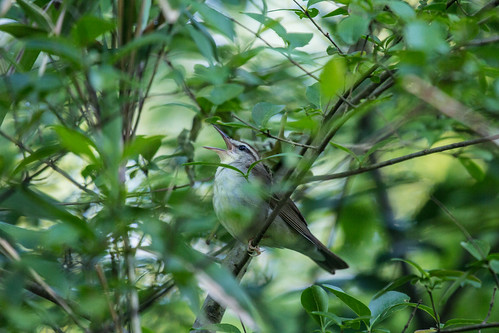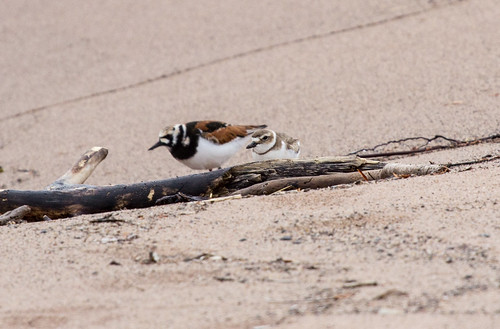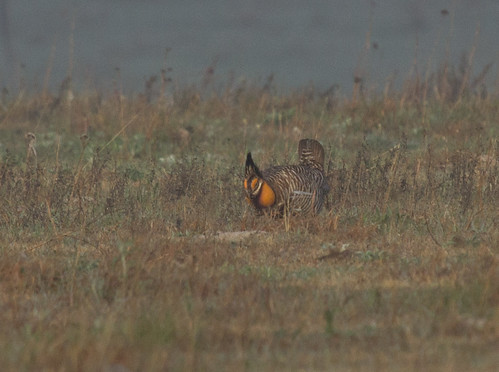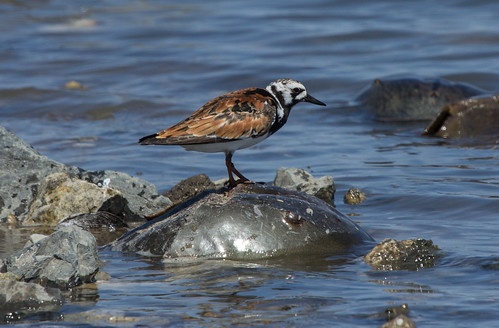I’m doing a low-key birding Big Year with a conservation focus, trying to see as many birds of conservation concern in the Lower-48 in 2013 as I possibly can. So far I’ve birded in Minnesota, Wisconsin, Illinois, Florida, Texas, Colorado, Kansas, Oklahoma, and Delaware. And so far my year has turned out to be more expensive than I feared, so I’m not sure how much I’ll be able to afford to do the rest of the year. I’ve already paid for a van trip up the Mt. Washington Auto Road in New Hampshire to see Bicknell’s Thrush, and for the boat ride to Machias Seal Island to see puffins, Razorbills, and other cool species. That trip will be in mid-June. And I’m hoping I can still work my way to a few places in Arizona, Big Bend in Texas, and parts of California and Washington, and to go on at least one of Debi Shearwater’s pelagic trips in the Pacific.
Two of the trips I’ve taken, “Minnesota Birding Week” tours led by Kim Eckert, were high intensity, covering large swaths of south Texas and Colorado. My group saw over 200 species in Texas and, despite awful weather, over 150 in Colorado, and I was able to see quite a few birds that were high on my priority list as species of conservation concern. Exciting and efficient as both trips were, many of even the best experiences were almost as frustrating as they were wonderful. Kim was aware of a perfect spot where we could see Greater Sage-Grouse displaying right on an untraveled road—this was a spot I’d never have been able to find out about, much less get to, without being on his tour. We started while it was still absolutely dark, watching from close range as birds strutted about, flaunting their exotic plumage, their Mae West air sacs popping in and out. The birds continued displaying until well after sunrise, but it had just snowed and the clouds were so thick that we had low light conditions right up until people were starting to get restless and hungry. I could have stayed for at least an hour or two longer, until the entire display was over, and would have gotten stunning photos as the light improved, but we had to move on. The only way I could have had the experience at all was with this group, and we saw plenty of other species that day that we’d have missed if we hadn’t moved on when we did, but it was still a painful trade-off. The problem is that there aren’t enough hours in a day, or enough days in a year, or in a lifetime, to take it all in.
To get to all the places I’ve been to even on my own, I’ve had to be on something of a schedule. I’ve funded part of my Big Year via speaking gigs that covered some of my expenses, but that means that I’ve had to be at certain places on time for those events. I was exactly where the critically endangered interior population of Least Terns breeds while I was in Kansas and western Oklahoma, but had to move on to southeastern Oklahoma over a week before the terns were expected to arrive. Had I arrived there later to see the terns, the Greater Prairie Chickens would no longer have been dancing.

I was in southeastern Oklahoma right when Swainson’s Warblers were establishing territories, but missed out on other birds’ arrivals before I had to head on to Delaware.
I’m thrilled about the work the Delaware birding community is doing to protect horseshoe crabs and the Red Knots who depend on their eggs as essential sustenance during their critical migration stopover, and I had a few opportunities to see this splendid bird at a distance (as well as much closer Ruddy Turnstones and lots of horseshoe crabs), but had to fly home on the 20th, several days before the full moon worked its magic on the crabs, when the Red Knot spectacle would be at its finest.
Meanwhile, I was still in Delaware on May 19 when a spectacular fall-out of migrants occurred in Duluth. I keep up on the news via internet listservs, so each day I was painfully aware of what I was missing. I’ll be home for at least a couple of weeks through early June, when I hope to catch up with my treasured local birds, but will have to leave them yet again to see a host of exciting species I can’t see in Duluth.
Dorothy Gale was right—there IS no place like home. But every place is home for some birds. The more of these other places I visit, the hungrier I am to see more, and to spend more time in each one, even as I grow hungrier to hunker down with my own dear chickadees and other backyard birds. No human being can experience all of it. I’m finding that the more I see of America’s avian wonders, the more I treasure each splendid moment as it happens, and the wealthier I feel in a way that transcends anything that can be measured in dollars. My Conservation Big Year may allow me to get the word out about how and why people are helping birds in need, and how we can support them. But it’s also turning out to be one of the most fascinating years of my entire life.




